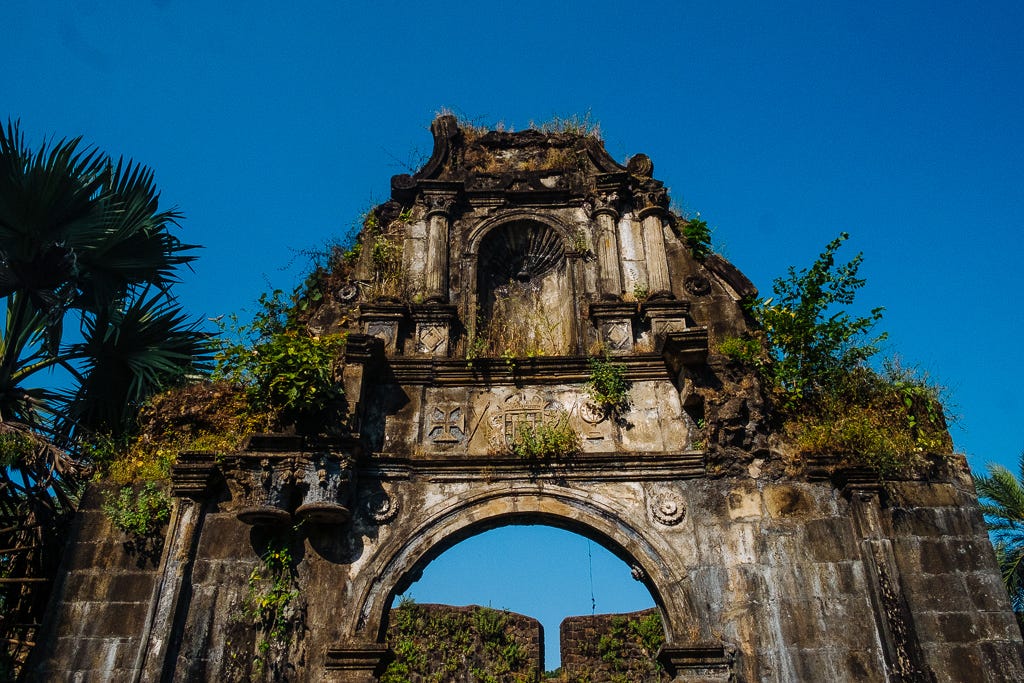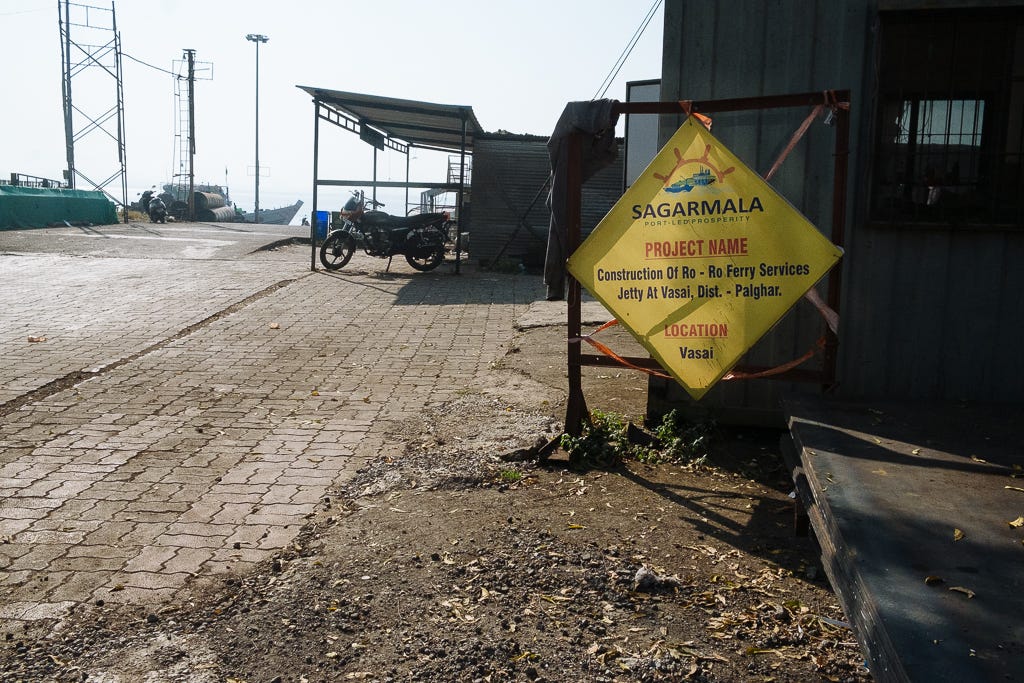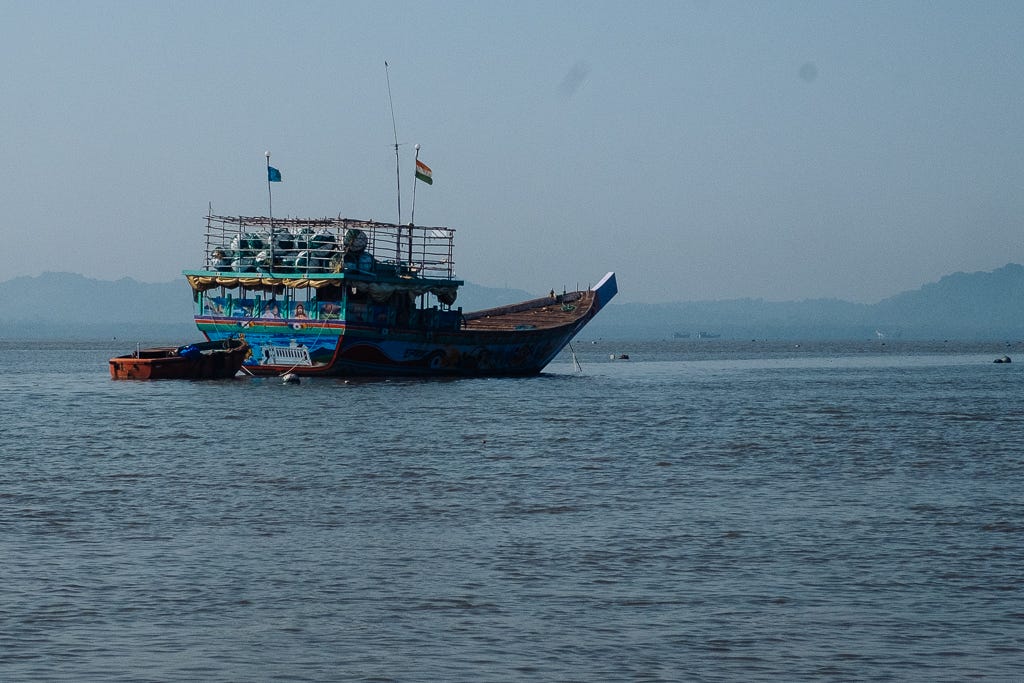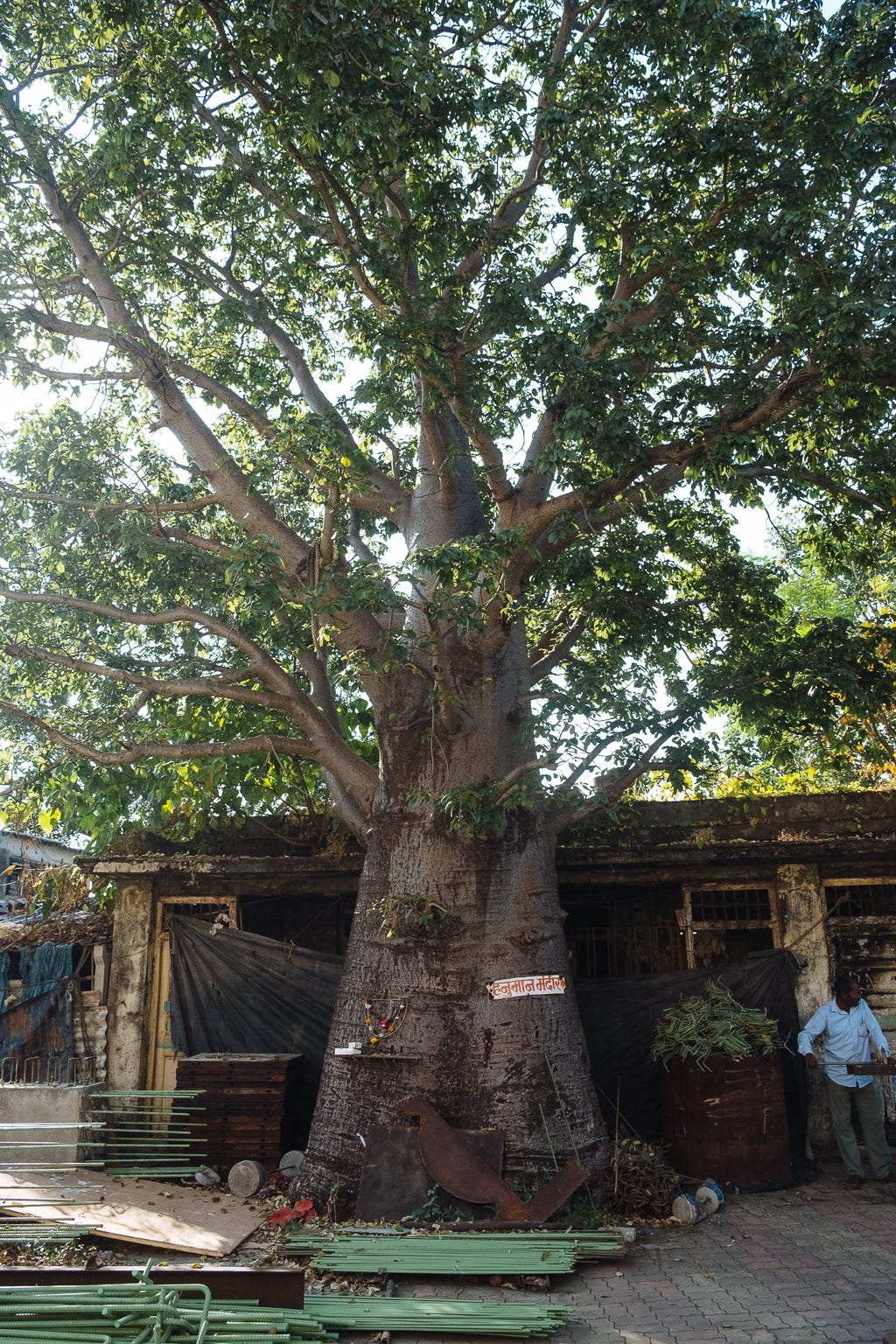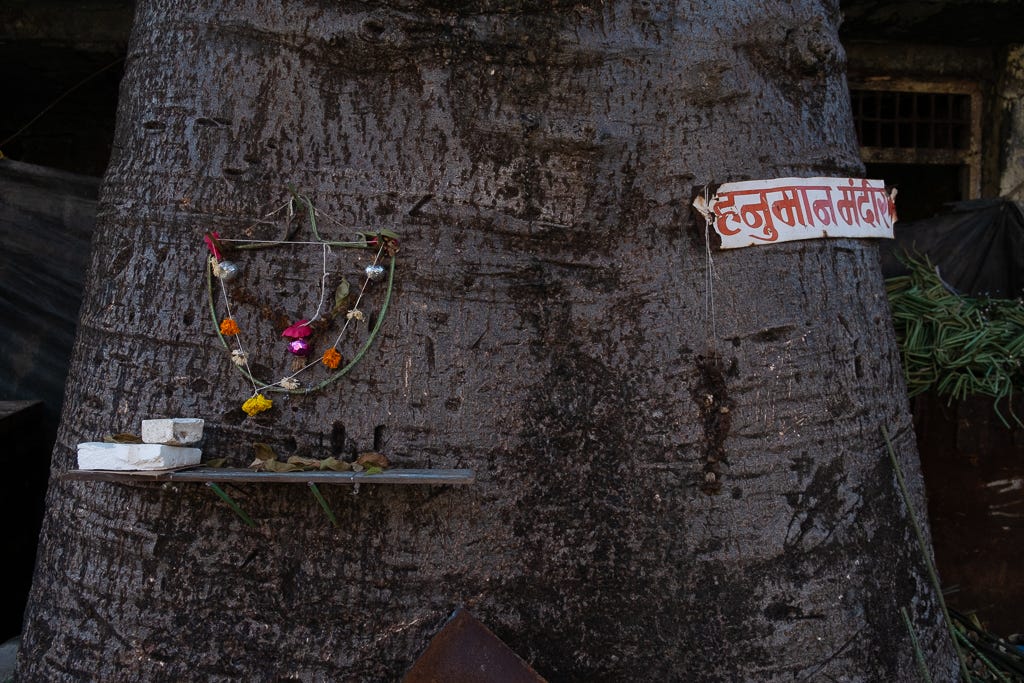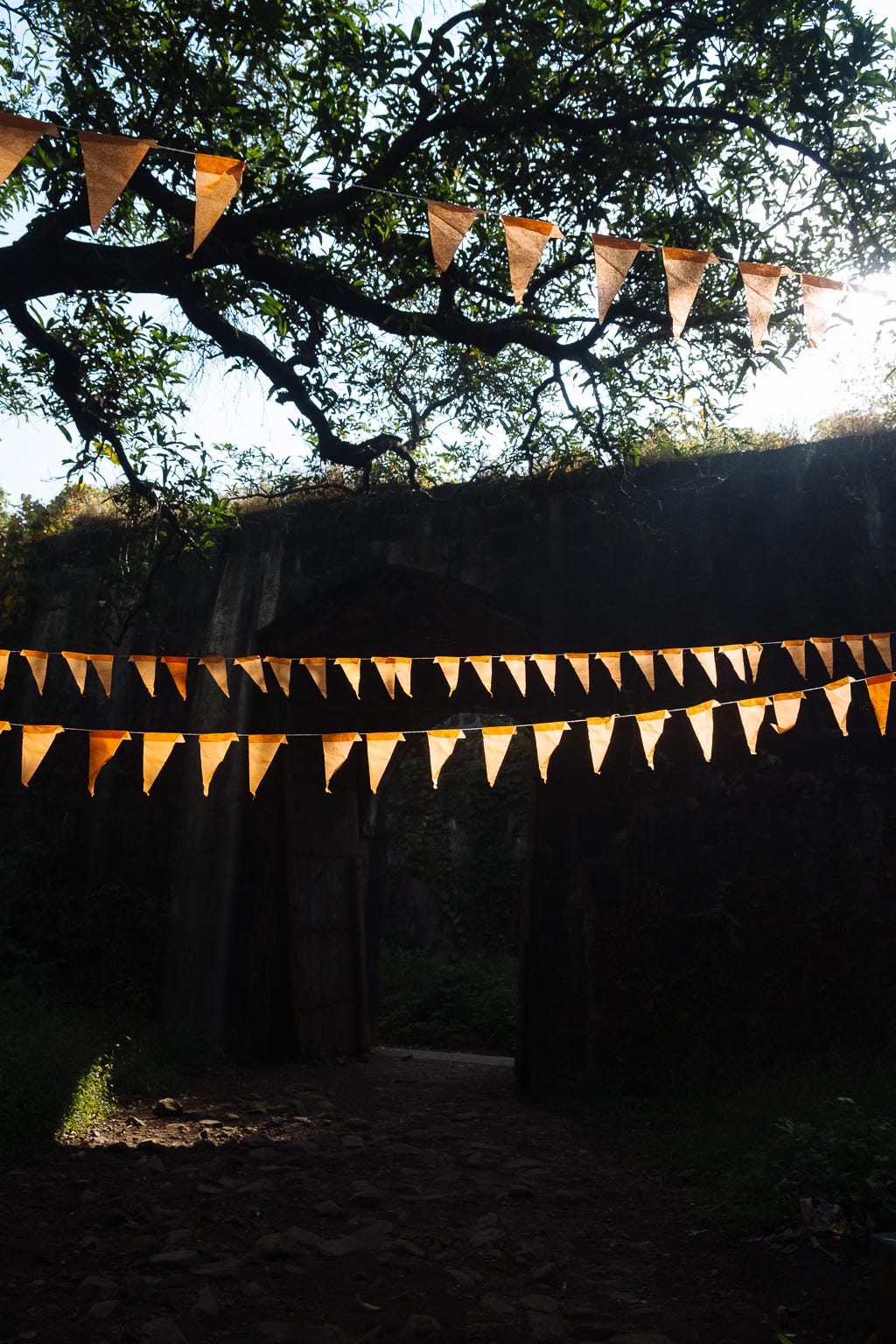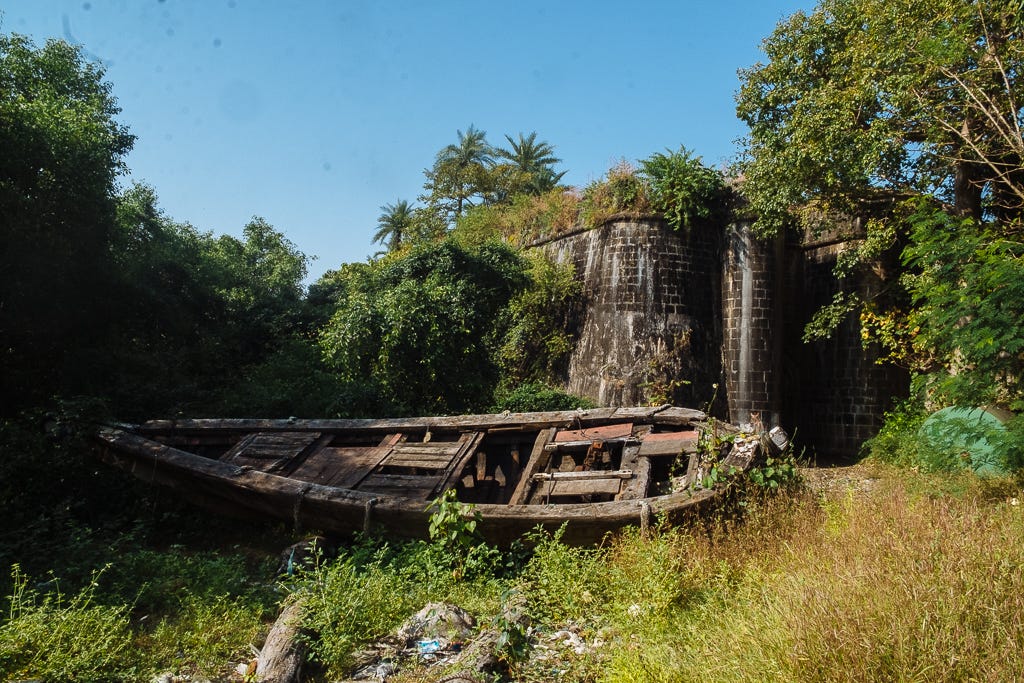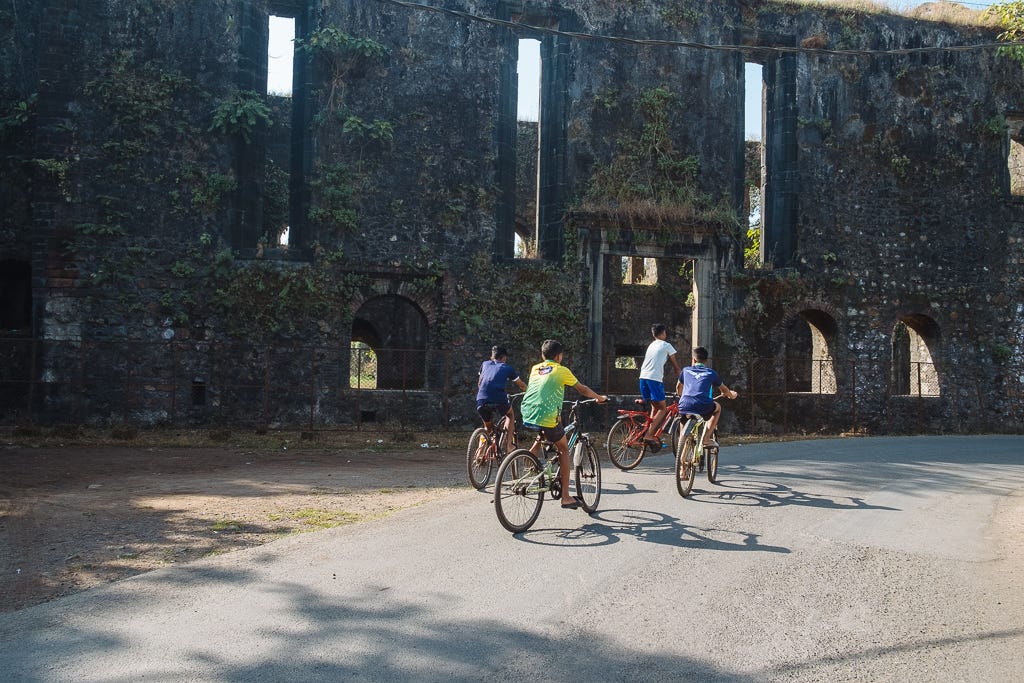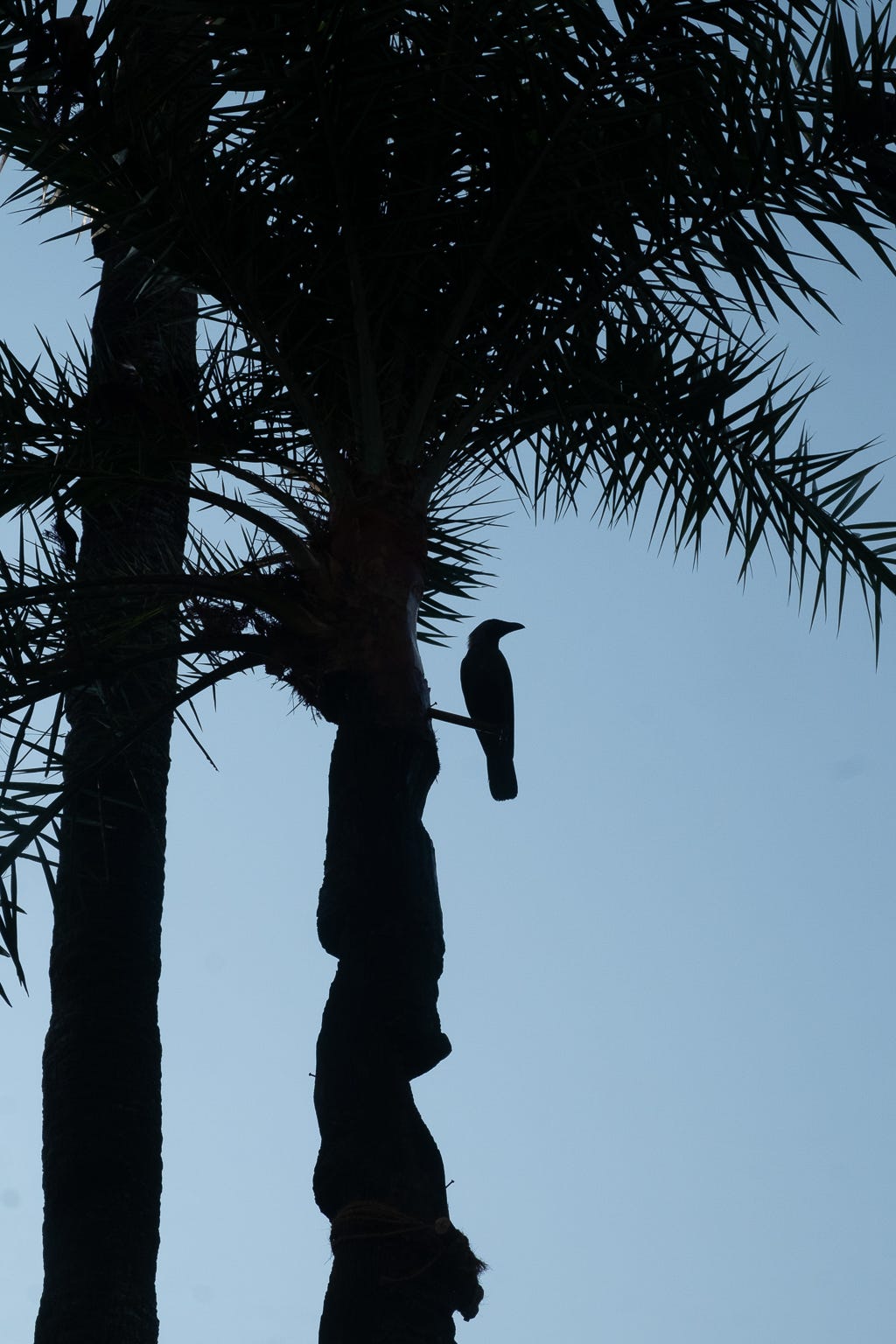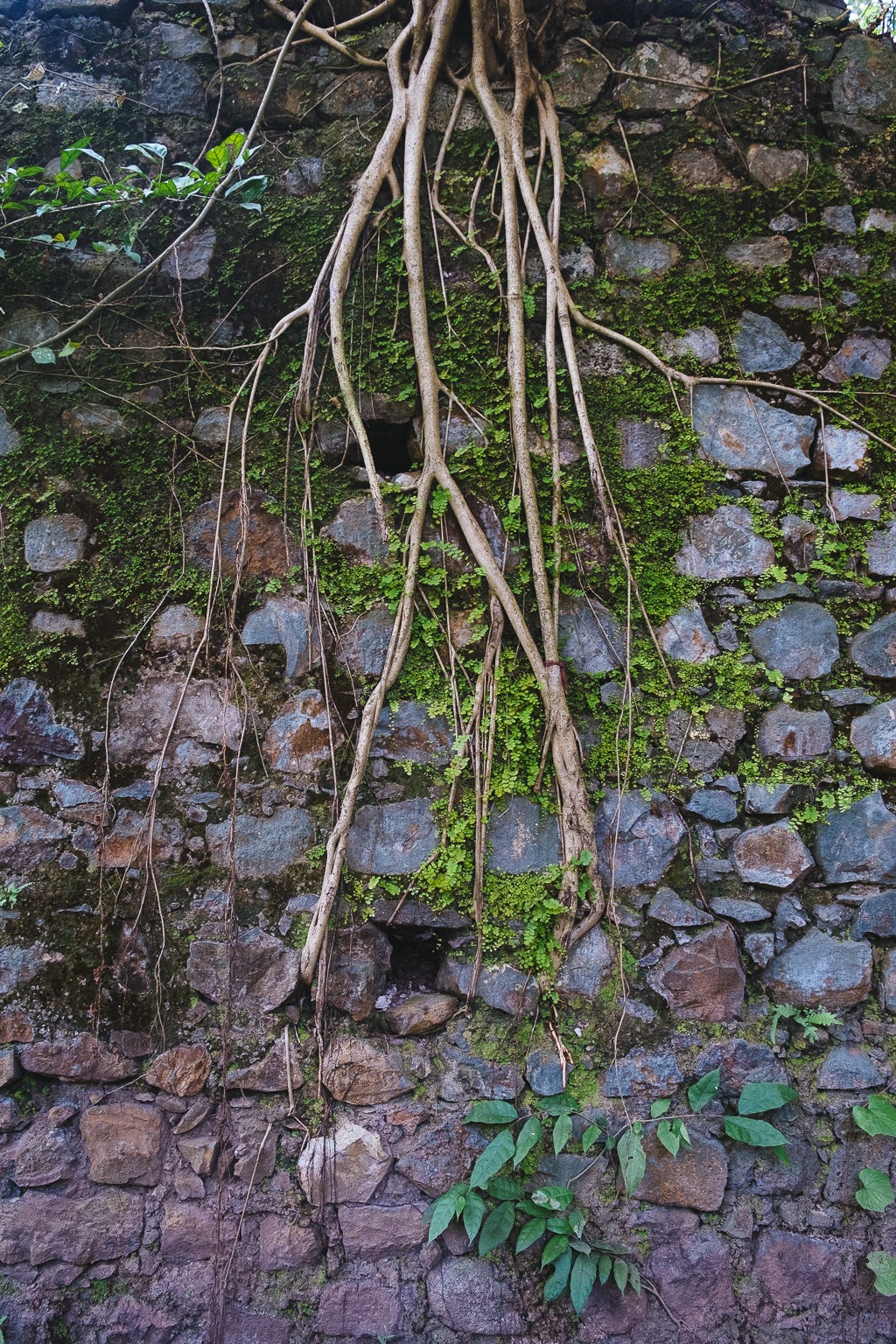For several decades after 1526 CE, this was an important port for the most powerful colonial power of the time - Portugal. We know it today as Vasai, and the Portuguese called it Baçaim. Today, it’s hard to imagine the power the Portuguese wielded over the Indian Ocean in the 16th Century. Still, you can get a glimpse of their seaward-looking importance among the ruins of the fort of the Vasai Fort.
In 2022, a small board announces India’s ambitious SagarMala project. A larger jetty is being built; a few ferries are gathering rust, and a couple of fishing vessels are replenishing their supplies for their next expedition.
A Baobab tree stands tall between the jetty and the entrance of the old Vasai Fort, which would’ve been quite extensive during its better days. Young men play cricket in an old church, and several photographers make images of models among the ruins. The migrant workers who work on the Sagarmala project live in hovels, and the majestic African tree is also a Hanuman Shrine.
This fort is one of the places featured in the music video for Coldplay’s Hymn for the Weekend.
The Crown of Palms
Today, rising above the Fortaleza de São Sebastião de Baçaím, as the Portuguese called it, are the palm trees. If you live in Mumbai and have tasted the drink called Nira, this is where a sizeable portion of it comes from.
Nira is Palm Nectar tapped from the top of the tree overnight in pots. They are collected early in the morning, between 6 and 7, by migrant workers from Bengal. They are then sent to Mumbai every day. If they are kept for a longer time, the nectar turns into toddy. However, these harvesters do not have a license to convert the Nira into an alcoholic drink.
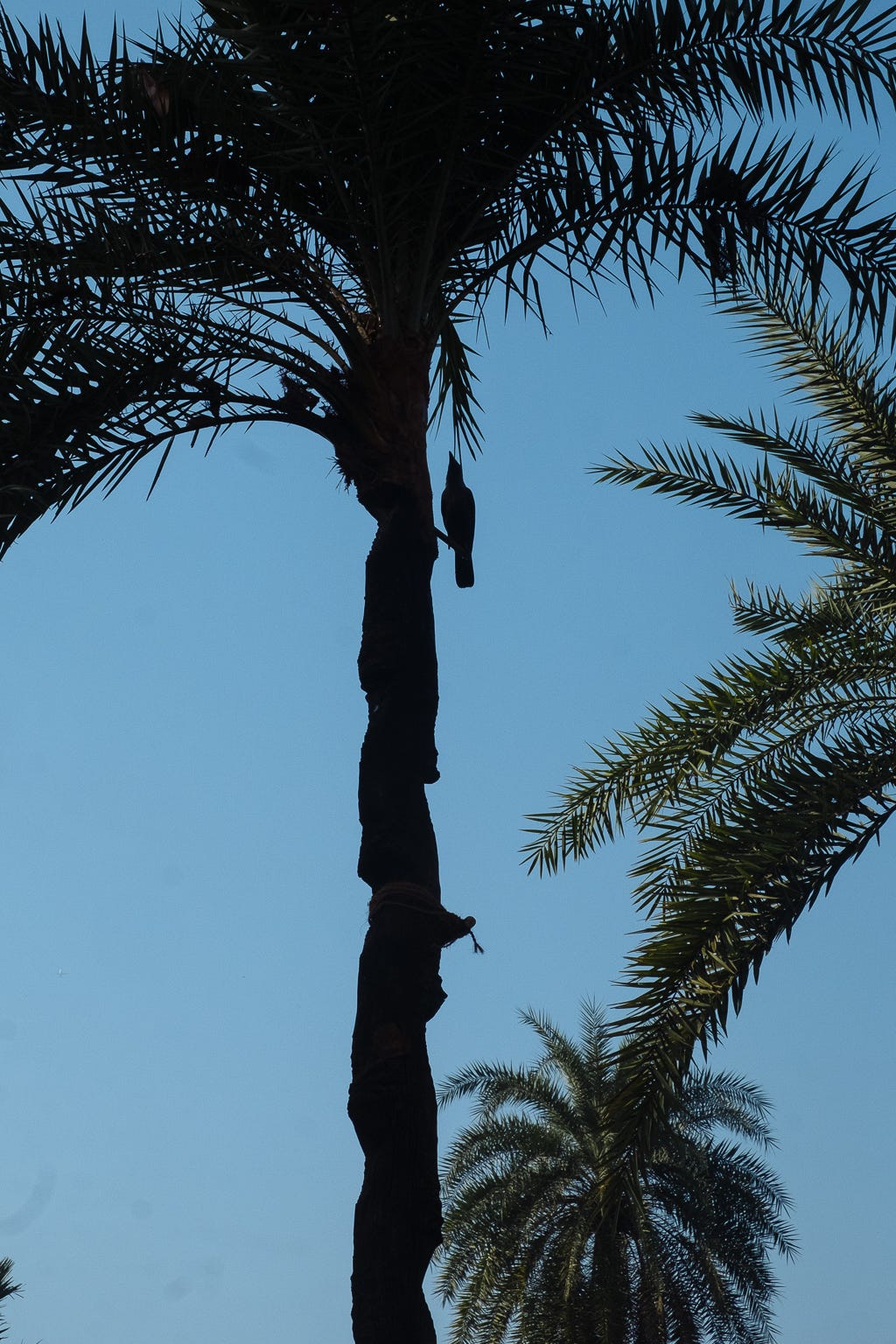
Back in Bengal, workers used their skills to harvest nectar to make palm jaggery. Extracting nectar is simple and fascinating, requiring no crushing or leaching. The nectar is obtained by scraping most tender parts just below the crown. After the pots are removed in the morning, birds feast on nectar. After lunch and late afternoon, the pots are placed again to collect nectar.
Palms around the subcontinent
The nectar can be extracted from different palms. Here is a video from the Konkan region showing how the nectar is extracted for fermentation to make Tadi Madi from a coconut palm, as it is called in this region. The occupation is called toddy-tapping in Indian English.
PARI has a beautiful photo essay on how the palm’s nectar is harvested and turned into palm sugar in Tamil Nadu.
Toddy is banned in Tamil Nadu. It’s tapping for palm jaggery and Neera that sustains livelihoods. But there’s more to it, as you can see from this story.
And this is a short history of the toddy tappers.
While this story is about Neera, the other product, toddy, plays a more important role in Indian societies. Ajay Kamakalaran has a story about how the drink can also break divisions.
In Goa, you can even learn the skills to become a toddy tapper.
Stepping across the Palk Straits onto the Island of Sri Lanka, many things are the same, including how the palms are tapper. https://www.antoinejonquiere.com/toddy-tappers
Toddy Tapping was always an important occupation across South Asia. It was and is a caste-based occupation. This story from Thalassery in Kerala briefly introduces toddy tapping, caste and discrimination. The story's title is The Last Tappers, but should we wait for a while before we put a full stop?





